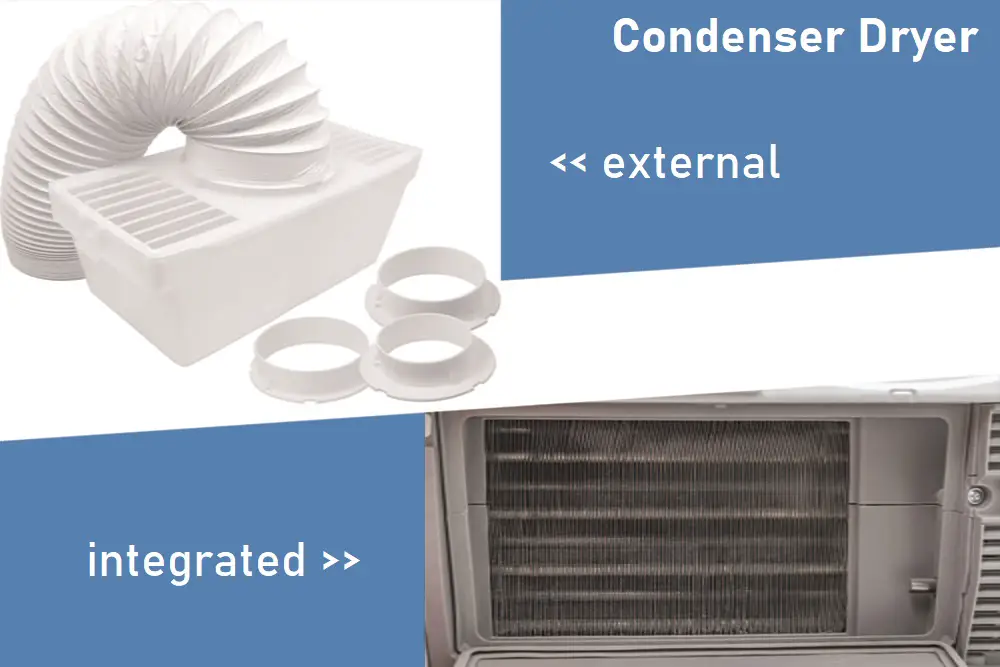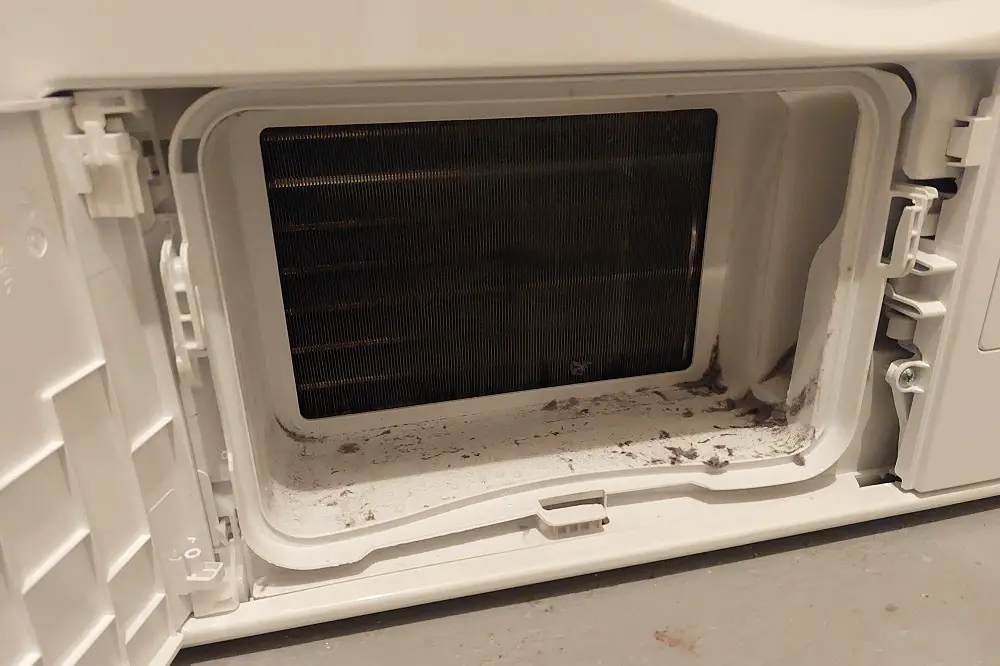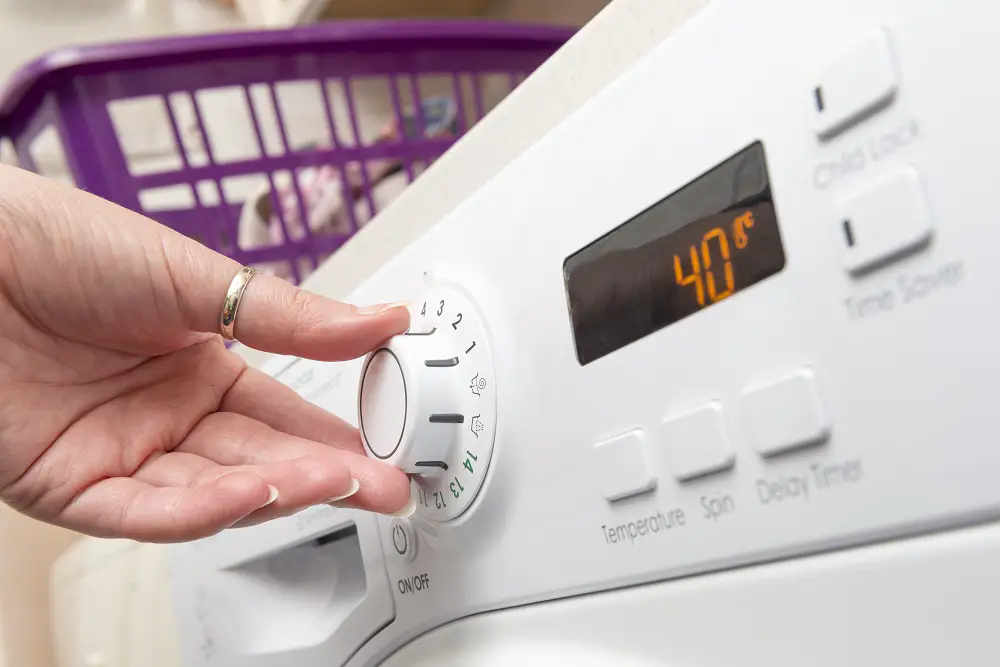One common question among denim lovers is whether or not you can safely tumble dry jeans.
With different fabric compositions and wash care labels on various jean brands, it can be confusing to determine the best way to dry your beloved pair without causing damage.
While some experts may advise against tumble drying jeans, many others argue that it is perfectly acceptable when done with care and caution.
Tumble drying can help your jeans regain their shape when they become stretched out. However, it is essential to follow the washing and drying instructions on the care label of each garment to prevent any harm. By following certain measures and drying techniques, you can preserve the quality and appearance of your jeans for years to come.
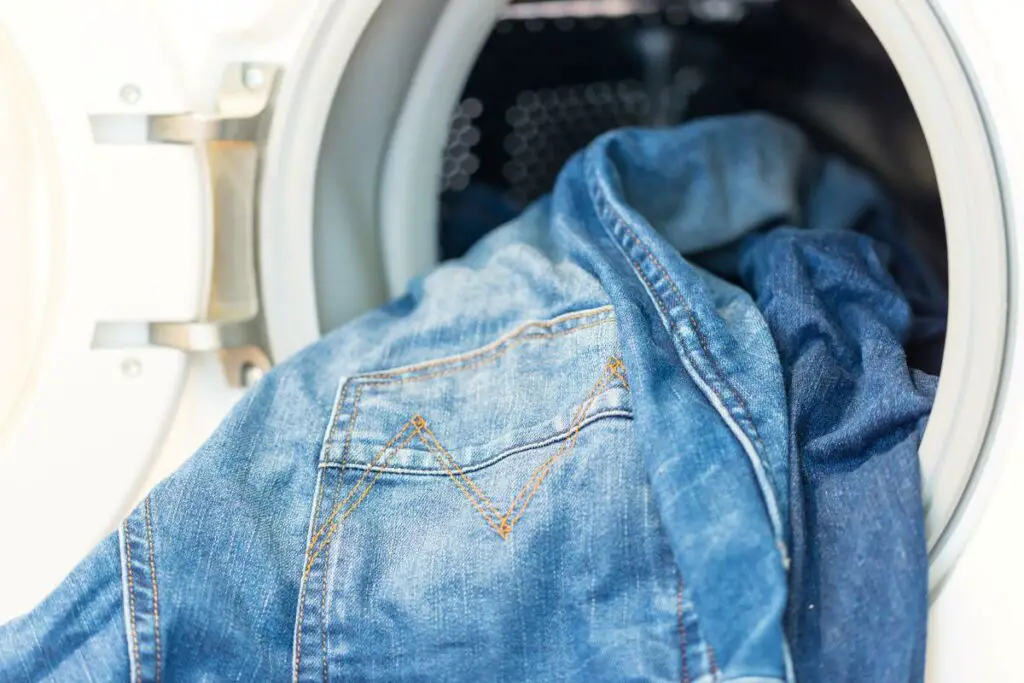
In this article, we will discuss the pros and cons of tumble drying jeans and explore some best practices to maintain the longevity and shape of your favorite denim pieces.
Table of Contents
Understanding Tumble Drying
In this section, we will explore the process of tumble drying, how different types of dryers work, and their impact on jeans.
How Tumble Dryers Work
Tumble dryers work by using heat and motion to extract moisture from fabrics. As the drum rotates, hot air is circulated inside, evaporating the moisture from the wet garments.
This moisture-laden air is then expelled from the dryer, leaving the garments dry and free from wrinkles.
Although tumble drying is a convenient and efficient way to dry clothes, it can potentially damage the fabric if not used with care.
This is particularly relevant when it comes to jeans, as the high temperatures can shrink denim and alter its shape.
Different Types of Dryers
There are several types of tumble dryers available, each with its own set of advantages and drawbacks. Understanding the differences can help you decide which dryer is suitable for drying your jeans.
- Vented Dryers: These dryers require an external vent to expel the moisture-laden air. They are generally less energy-efficient than other types of dryers and may not be suitable for jeans. However, they are less expensive to purchase initially.
- Condenser Dryers: Condenser dryers do not require an external vent, as they collect the evaporated moisture in a container that needs to be emptied periodically. These dryers tend to be more energy-efficient than vented dryers and can be a safe option for tumble drying jeans when used in a low-heat setting.
- Heat Pump Dryers: These dryers use a heat pump to heat the air inside the drum, making them the most energy-efficient option. They are typically more expensive upfront but can save money in the long run due to their low energy consumption. Heat pump dryers are considered the best choice for drying delicate fabrics, such as denim, without causing damage.
When tumble drying jeans, it is crucial to follow the care label instructions and use the appropriate settings.
Techjut tip: You can tumble dry most jeans for half the normal drying time to minimize damage and maintain their shape.
However, always keep in mind that alternative drying methods, such as hang drying or laying flat on a towel, can be gentler on your jeans.
Pros and Cons of Tumble Drying Jeans
Pros
- Time-saving
- Softness
- Less wrinkling
Cons
- Fading
- Shrinkage
- Wear and tear
Advantages
Tumble drying jeans has several benefits, making it an appealing option for some people:
- Time-saving: Tumble drying jeans speeds up the drying process, allowing you to wear your jeans soon after washing them.
- Softness: Tumble drying can create a softer feel in jeans, compared to air-drying them, which may leave them stiffer.
- Less wrinkling: Drying jeans in a tumble dryer may result in fewer wrinkles, making it easier to fold and store them.
Disadvantages
However, there are also some drawbacks to tumble drying jeans:
- Fading: Tumble drying can cause the colors of your jeans to fade over time. To minimize fading, it is recommended to turn your jeans inside out when drying them.
- Shrinkage: Jeans can shrink in the dryer, particularly if they contain materials like lycra or elastane. This can lead to a tighter fit and reduced comfort.
- Wear and tear: The heat and friction in the tumble dryer can potentially damage the fabric of your jeans. This can lead to a shorter lifespan for your favorite pair of denim.
3 Steps to Tumble Dry Jeans Safely
1) Preparing Your Jeans
Before tumble drying your jeans, make sure to check the care label for any specific instructions or restrictions.
Ensure that the jeans are properly washed and all zippers, buttons, or hooks are fastened.
Turn your jeans inside out to minimize fading and protect their appearance.
2) Choosing the Right Settings
Select the appropriate dryer settings according to the care label or the fabric type of your jeans.
Opt for a low-heat cycle to prevent any damage or excessive shrinkage.
If your dryer has a unique option for denim or mixed fabric loads, use this setting to ensure proper care for your jeans.
Still unsure? We explain all tumble dryer settings in our guide.
3) Checking the Dryer
Regularly check the dryer to monitor the progress of your jeans.
It is important to remove them when they are slightly damp to avoid unwanted creasing and over-drying. This can also help them regain their shape.
Once done, properly fold or hang your jeans for storage.
Alternatives to Tumble Drying Jeans
Although tumble drying jeans can be done without ruining them, there are alternative methods to consider for drying your denim with minimal damage.
Two popular methods are air drying and using a clothesline.
Air Drying
Air drying is a gentle method that preserves the shape and integrity of jeans.
Air drying allows them to dry naturally without using a dryer or any other device that produces heat or airflow. When it comes to air drying jeans, the process involves hanging them up to dry after washing.
It is recommended to hang them inside out to avoid fading and to avoid direct sunlight, which can also cause fading. Jeans can take anywhere from eight to 24 hours to air dry inside, with most drying in 10 to 12 hours.
It is important to give them plenty of time to dry and stretch the seams while they are still slightly damp to prevent them from shrinking.
Once they are completely dry, you can hang or fold your jeans to store in a drawer or on a shelf.
Use The Towel Method
To towel dry them, simply follow these steps:
- Lay the jeans flat on a clean, lint-free towel. This can be done on a bed or an unused surface.
- Place another towel on top of the jeans to absorb excess moisture.
- Roll up the towel with the jeans inside, and gently squeeze to remove more water.
- Unroll the towel and lay the jeans flat on a drying rack, or hang them up with care to avoid creasing.
This method allows for even drying without applying direct heat or agitation, which can damage denim fibers. Towel drying may take longer, but it is typically the best option to remove the majority of water without any risk.
After towel drying your jeans, you may opt for air drying to remove the remaining humidity.
Using a Clothesline
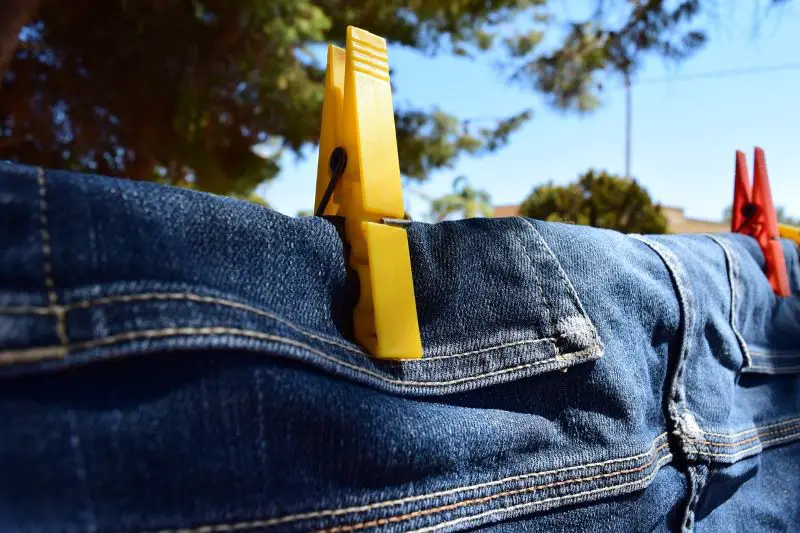
Using a clothesline is another effective way to air-dry jeans without causing damage. Follow these steps to properly hang jeans on a clothesline:
- Remove excess water from the jeans using a towel or by gently wringing them out.
- Clip the jeans to the clothesline by the waistband or the hem, depending on whether you want the jeans to retain their length or width.
- Allow the jeans to air dry, preferably in a shaded area to reduce fading from the sun. If necessary, adjust their position on the clothesline to ensure even drying.
Using a clothesline is an eco-friendly and low maintenance alternative to tumble drying jeans. This method may take longer than tumble drying, but it helps preserve the color, shape, and fit of your denim.
Conclusion
While tumble drying jeans may cause some wear and tear, it is possible to do so without causing significant damage if done correctly. Keep in mind that a more cautious approach, such as tumble drying for only half of the normal drying time and finishing by laying the jeans flat on a lint-free towel, can help preserve their shape and lifespan.
However, some experts suggest that tumble drying may lead to unwanted creasing, wrinkles, and even impact the fading of raw denim. Therefore, it is essential to check the care label on each pair of jeans and follow the recommended care instructions.
In summary, tumble drying jeans may be suitable for certain types of denim but might not be the best option for all. Considering alternative drying methods, such as hang drying or laying flat, can help preserve your jeans’ quality and longevity. If your jeans are stretched out, a brief tumble dry session may help them regain their shape, but be cautious not to overdo it to avoid unnecessary wear.
